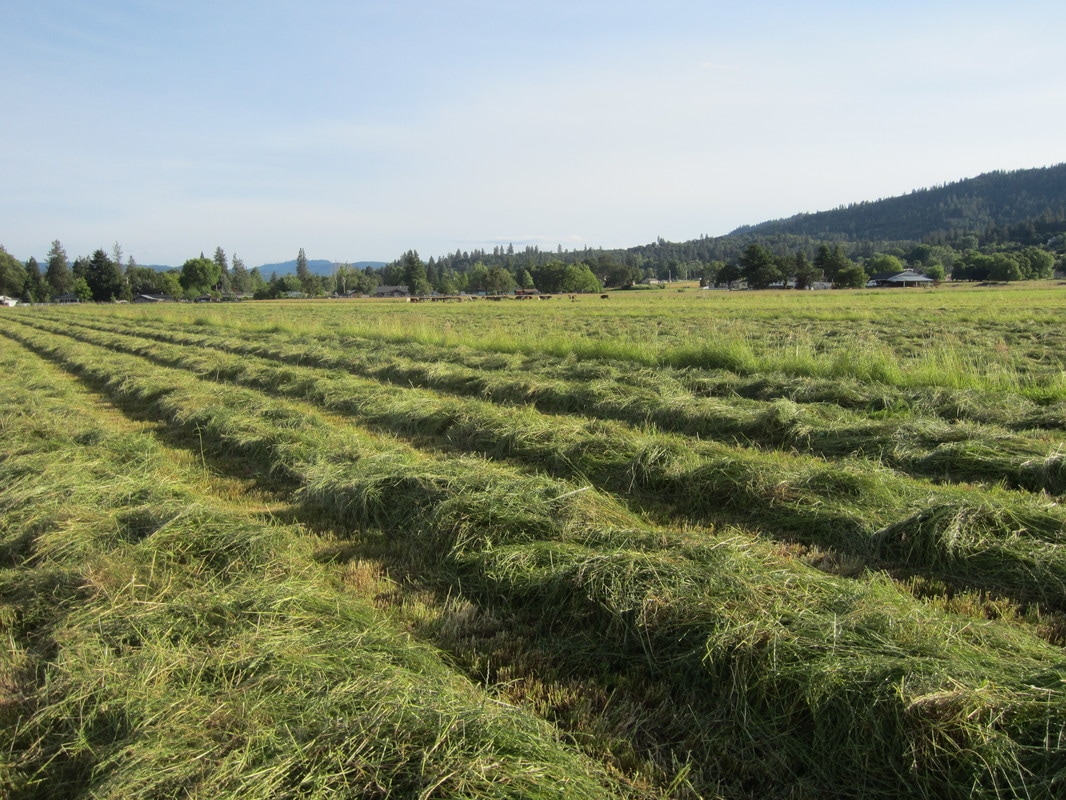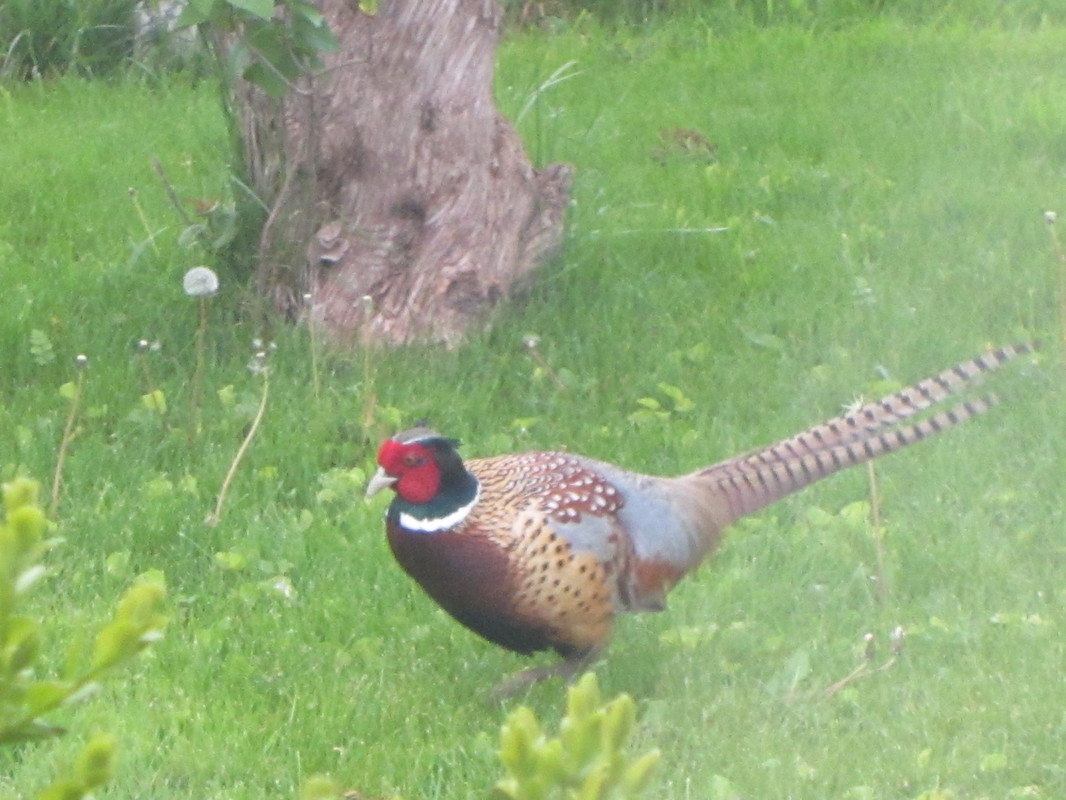Here are Ferdinand (on left) and the cow herd grazing a paddock on a hot August afternoon. Our ability to provide plentiful high quality forage to our cattle even during the peak of summer temperatures is one thing that sets us apart from most other producers. Our 60 day breeding season is drawing to a close and soon Ferdinand will be removed from the herd so that our calving season next year will stay compact and the age variation in our calf crop will be held to a minimum. This helps in producing consistently finished yearlings the following year during our 3 month harvest season. This year's harvest season will start week after next and the first group of animals are very nicely finished. We do still have about half a dozen yearlings that are not sold, so this is a perfect time to take a tour of our ranch and see what harvest ready animals look like.
|
We are about 10 days away from the decline of our spring rush of work. This picture is of the last field of hay that I will put up this year and was taken from almost the same vantage point as the one in my early April blog posting. This field of hay consists of 6 paddocks that were grazed by the cow herd during calving season in the first half of April. So this forage had two months of regrowth and will yield a good quantity of nice quality hay. The two fields of hay that I already put up were cut in May and also yielded well and were even nicer quality than this field. So, it looks like the cows and weaned calves are going to have plenty of excellent feed this winter.
I am almost halfway through AI breeding season and you can barely see the cows and calves grazing in the distance. The cooler spell of weather has been very welcome and has given me a short breather from irrigation duties. But the transition to summer looks imminent and I have my irrigation pump back up and running. The water supply looks good this year, so forage production should be plentiful and of high quality for both the cow herd and my yearlings being finished for harvest which will start in two months. This morning at first light, as I headed out through the pasture to check one of the last expectant cows, I heard at least four different rooster pheasants crowing back and forth. I'm guessing they are in the midst of mating season and hoping to attract a pheasant hen. I've been pleasantly surprised by the number of ring-necked pheasants that populate our ranch and the neighboring properties that I manage. When we farmed in southern Iowa a couple of decades ago, we were in territory that was considered prime pheasant habitat. But we actually see and hear as many pheasants here on 100 acres as we did on 1200 acres in Iowa. One reason for that is because the consistent supply of tall forage that is available for our cattle also provides ideal habitat for the pheasant population. Years ago, when our daughters were little, they named the rooster pheasant that hung around the driveway and our yard "Filbert". Pictured above is the latest iteration of Filbert as I caught him sneaking past our living room window the other day.
|
Archives
August 2018
Categories |



 RSS Feed
RSS Feed